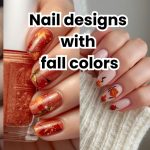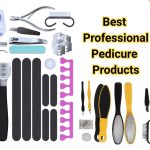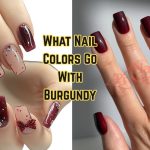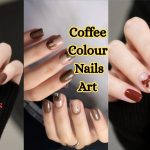As an Amazon Associate I earn from qualifying purchases.
Imagine waking up each day with perfectly healthy nails, free from the embarrassment and discomfort of nail fungus. You’ve tried countless remedies, but those stubborn fungi just won’t budge.
Here’s where UV light comes into the picture. You might be wondering, “Will UV light kill nail fungus once and for all? ” This question sparks curiosity because, let’s face it, the idea of using light to combat a pesky problem sounds both innovative and intriguing.
As you read on, you’ll uncover the truth about UV light’s effectiveness against nail fungus, backed by science and expert opinions. Get ready to discover if this could be the solution you’ve been searching for, and prepare to take a step closer to healthier, happier nails.
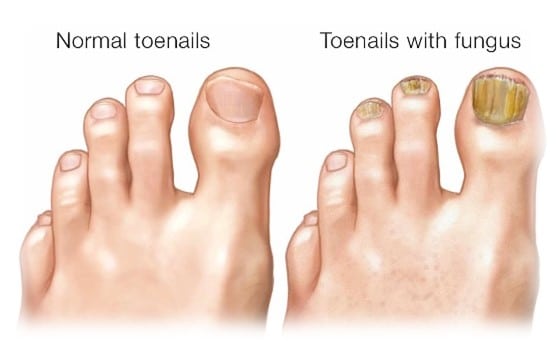
Credit: www.urbanbodylaser.com
What Is Nail Fungus?
Nail fungus is a common infection that affects the nails. It is also known as onychomycosis. This condition is caused by fungi that thrive in warm and moist environments. Nail fungus typically starts as a white or yellow spot under the tip of your nail. Over time, the fungus may spread deeper into the nail, leading to discoloration, thickening, and crumbling at the edges.
Fungal nail infections can occur in both fingernails and toenails, but they are more common in toenails. The infection can cause discomfort and may affect the appearance of your nails. Understanding the causes and symptoms is essential for effective treatment.
Causes Of Nail Fungus
Nail fungus is caused by various fungi, including dermatophytes, yeasts, and molds. These fungi can thrive in warm, damp places like pools and showers. Wearing closed shoes that do not allow air circulation can increase the risk. Walking barefoot in public areas is another common cause.
Individuals with weakened immune systems are more prone to nail fungus. Other risk factors include diabetes, poor circulation, and a history of athlete’s foot. Age is also a factor, as the elderly have reduced blood circulation and more brittle nails.
Symptoms To Watch For
Nail fungus symptoms can vary depending on the severity of the infection. Common signs include thickened nails and discoloration. Nails may appear yellow, brown, or white. They might also become brittle, ragged, or distorted in shape.
In some cases, an infected nail may separate from the nail bed. This can cause pain and a foul odor. If left untreated, nail fungus can spread to other nails or skin.
How Uv Light Works
Have you ever wondered how UV light might be able to help with pesky nail fungus? UV light is often mentioned in discussions about nail care and health, but do you really know how it works? Understanding the science behind UV light can be intriguing and might just be the key to clearer nails.
Basics Of Uv Radiation
UV radiation is a type of energy produced by the sun and artificial sources like lamps. It’s invisible to the naked eye but has powerful effects. Did you know there are three types of UV radiation, categorized by their wavelength?
UV light can alter microorganisms. It disrupts the DNA structure, which can help eliminate certain fungi, including those that cause nail fungus. Imagine the UV rays as tiny warriors fighting off the invaders on your nails.
Types Of Uv Light
There are three main types of UV light: UVA, UVB, and UVC. Each type has its own unique properties and applications.
- UVA:This has the longest wavelength and is commonly used in tanning beds. It’s less effective at killing fungi but can penetrate deeper into materials.
- UVB:Known for causing sunburn, UVB is more effective than UVA at targeting microorganisms.
- UVC:UVC has the shortest wavelength and is the most potent. It’s often used in sterilization devices to kill bacteria and fungi.
Only UVC is typically strong enough to kill nail fungus. However, it requires careful handling due to its potential to harm your skin and eyes. Have you ever noticed the warning labels on UV devices? Safety is crucial when using them.
Would you consider using UV light for nail fungus treatment, knowing its power and risks? It’s a decision that requires weighing the benefits against the precautions. Remember, it’s not just about the science but also about how it fits into your lifestyle and safety protocols.
Uv Light As A Treatment
Are you tired of battling stubborn nail fungus? UV light might offer a solution. While UV light is commonly used for sterilizing surfaces, its application in treating nail fungus is gaining attention. But how does this seemingly simple treatment work, and is it effective? Let’s dive into the details.
Mechanism Against Fungi
UV light operates by emitting ultraviolet rays that penetrate the cell walls of fungi. This disrupts their DNA, hindering their ability to reproduce and spread. Imagine the UV light as a microscopic warrior fighting the fungal cells.
Have you ever wondered why UV light is used in disinfecting environments? It’s because of its power to destroy harmful microorganisms. You might be surprised to learn that the same principle applies to treating nail fungus.
Effectiveness Studies
Research has been conducted to assess the effectiveness of UV light on nail fungus. Some studies report positive outcomes, showing significant reduction in fungal growth. Yet, results can vary depending on the severity of the infection.
Think about this: if UV light can sanitize surfaces, could it really defeat nail fungus? Clinical trials provide some promising evidence, but more research is needed to confirm its efficacy across diverse cases.
Would you consider UV light as a treatment option? As you explore solutions for nail fungus, it’s crucial to weigh the current evidence. Have a conversation with your healthcare provider to see if UV light could be a viable treatment for you.

Credit: iksbeauty.com
Pros And Cons Of Uv Treatment
Considering UV treatment for nail fungus? You’re not alone. Many are curious about this method’s effectiveness and safety. Let’s explore the pros and cons to help you make an informed decision.
Advantages Of Using Uv Light
UV light can target the fungus directly, disrupting its ability to thrive. This method offers a non-invasive option, avoiding the need for oral medications or surgical interventions. You might appreciate the convenience of treatments at home, saving time and potentially reducing costs.
Moreover, UV light devices are easy to use. They often come with straightforward instructions, allowing you to incorporate them into your routine seamlessly. Imagine tackling nail fungus while watching your favorite show or listening to music. It’s multitasking at its finest!
Potential Risks And Limitations
Yet, UV treatment isn’t without its drawbacks. Overexposure to UV light can harm your skin, increasing the risk of burns or even skin cancer. It’s crucial to follow guidelines and protect your skin during use.
Additionally, UV light might not work for everyone. Some fungi strains may resist UV radiation, leading to inconsistent results. Have you considered consulting a healthcare professional to determine if UV treatment suits your specific condition?
Lastly, initial costs can be a concern. High-quality UV devices can be pricey, and it’s essential to weigh these costs against potential benefits. Is the investment worth the potential outcome for you?
In your experience, have you found other treatments more effective? Share your thoughts and insights in the comments below. Your input could be invaluable to others navigating similar choices.
Alternatives To Uv Treatment
Exploring alternatives to UV treatment can lead to effective solutions for nail fungus. Options include antifungal creams and oral medications. Natural remedies like tea tree oil and vinegar also show promise in tackling this persistent issue.
If you’re dealing with nail fungus, you might wonder if UV light is the best solution. However, there are several alternatives that may be more effective or convenient for you. Let’s explore some options that could help you get rid of that stubborn fungus without relying on UV treatment.
Topical Antifungal Options
Topical treatments are often the first line of defense against nail fungus. These are creams, gels, or ointments that you apply directly to the affected area. Over-the-counter options like clotrimazole and terbinafine can be effective when used consistently. Prescription-strength topical treatments are available if over-the-counter options don’t work. Ciclopirox and efinaconazole are two examples that a doctor might recommend. Consistency is key here; applying these treatments daily can make a significant difference. Have you ever tried a topical treatment only to forget about it after a week? It might be time to set a daily reminder. This small habit could be your ticket to clearer nails.
Oral Medication Routes
Oral medications offer another way to tackle nail fungus, particularly for more severe cases. These are often prescribed when topical treatments don’t yield results. Terbinafine and itraconazole are popular choices that work from the inside out. The benefits of oral medication include faster results and the ability to treat the entire nail. However, they do come with potential side effects like liver damage or skin rashes. It’s crucial to discuss these risks with your healthcare provider. Wondering if oral medication is worth it for you? Consider your lifestyle and how quickly you want to see results. A conversation with your doctor might provide the clarity you need.
Natural Remedies And Home Treatments
If you prefer a more natural approach, several home remedies may help combat nail fungus. Tea tree oil is a popular choice, known for its antifungal properties. Applying it daily to the affected nail might show improvements over time. Vinegar soaks are another option, especially when combined with warm water. They create an acidic environment that can deter fungal growth. Simple to prepare, these soaks can be part of your evening routine. Have you ever wondered if these remedies actually work? Some people swear by them, while others see no change. It might be worth trying these methods for a few weeks to see if you notice any improvement. Are you ready to say goodbye to nail fungus? Consider these alternatives and choose the one that aligns best with your lifestyle and preferences. Your journey to healthier nails might be just a decision away.

Credit: uvtreat.com
Expert Opinions And Recommendations
Experts suggest UV light might help in killing nail fungus, but its effectiveness varies. Medical professionals recommend consulting a dermatologist for personalized advice and treatment options.
If you’ve ever battled nail fungus, you know how persistent and frustrating it can be. Many treatments promise relief, but do they work? UV light therapy is gaining attention as a potential solution. Let’s dive into what experts have to say about using UV light to treat nail fungus. You might be surprised by their insights and recommendations.
Dermatologists’ Insights
Dermatologists often see patients struggling with nail fungus, and their insights are invaluable. Some experts suggest that UV light can be effective in killing nail fungus, but the key is consistency. Regular treatments might be necessary to see results. However, not all dermatologists are convinced. Some warn that while UV light might help, it should not replace traditional treatments. They recommend using UV light in conjunction with antifungal creams for the best outcomes. Consider discussing treatment options with your dermatologist. They can provide personalized advice based on your specific condition and needs.
Patient Experiences
Patients who have tried UV light therapy share mixed reviews. Some report noticeable improvements after a few sessions. They appreciate the non-invasive nature of the treatment and the convenience of at-home devices. Others, however, find the results disappointing. They mention that improvements were temporary or that they needed to combine UV light with other treatments for effectiveness. Have you tried UV light therapy yourself? Your experience could provide valuable insights for others considering this treatment. Sharing your journey could help others make informed decisions. Exploring different treatments can be overwhelming. But understanding expert opinions and real patient experiences can guide you in finding the right solution for your nail fungus. What approach will you choose to tackle this stubborn issue?
Future Of Uv Light In Fungus Treatment
The future of UV light in fungus treatment is promising. Traditional methods can be slow and ineffective. UV light offers a new approach. It targets the fungus without harming healthy tissue. This method is gaining attention from researchers and medical professionals. They are exploring its potential in treating nail fungus.
Innovations In Technology
Technology is advancing rapidly. New UV devices are emerging. These devices are portable and easy to use. They offer precision targeting of fungal infections. Innovations in LED technology enhance effectiveness. These advancements improve treatment outcomes. More people are turning to UV light solutions. They seek faster and more reliable results.
Research And Development
Research in UV light treatments is expanding. Scientists are studying UV wavelengths. They aim to identify the most effective ones. Clinical trials are underway. These studies assess the safety and efficacy of UV treatments. Research is focused on minimizing side effects. Development of UV light systems is ongoing. They aim to offer better results for nail fungus sufferers.
Frequently Asked Questions
Can Uv Light Effectively Kill Nail Fungus?
UV light can kill nail fungus by disrupting fungal cells’ DNA. However, its effectiveness varies based on exposure time and intensity. It’s not a standalone treatment, so consulting a healthcare professional is advised.
Is Uv Light Safe For Treating Nail Fungus?
UV light can be safe for nail fungus treatment when used correctly. However, overexposure can cause skin damage. It’s important to follow guidelines and consult a professional.
How Long Does Uv Light Take To Kill Fungus?
The time required for UV light to kill nail fungus varies. It depends on the intensity of the light and the severity of the infection. Generally, consistent treatment over several weeks may be needed.
Can I Use Uv Light At Home For Treatment?
Home UV light devices are available for nail fungus treatment. However, their effectiveness is less than professional treatments. Follow instructions carefully and consider consulting a healthcare provider.
Conclusion
UV light shows promise for nail fungus treatment. It targets fungus effectively. Yet, results vary among individuals. Consistent use is important for success. Other treatments might be needed alongside UV light. Consult a healthcare professional for advice. They can guide on the best options.
Safety is also important. Protect your skin during UV treatments. Explore all treatment options available. Choose what fits your needs best. Healthy nails can be achieved with patience. Start your journey towards healthier nails today.
Amazon and the Amazon logo are trademarks of Amazon.com, Inc, or its affiliates.


